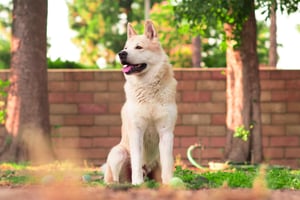Dogs are usually known to be loyal and loving companions, but they can become aggressive in certain...
Correcting Aggressive Dog Behavior: How to Stop A Dog From Acting Out
If you’ve ever had an aggressive dog, you know that it can be a stressful and difficult experience. It’s important to understand why your dog is acting out and to take the necessary steps to correct the behavior. In this article, we’ll explore the causes of aggressive dog behavior, how to identify it, and the best methods for correcting it.
What is Aggressive Dog Behavior?
Aggressive dog behavior is defined as any behavior that is intended to cause harm, fear, or distress to another living being. This can include barking, snarling, growling, lunging, snapping, and biting. Aggressive behavior is usually the result of fear, anxiety, or frustration, and can be triggered by a variety of things, including unfamiliar people and animals, lack of exercise, and even boredom.
It’s important to note that aggression is not always a bad thing. Dogs can use aggression as a way to protect their family, possessions, and territory. The key is to recognize when your dog is exhibiting aggressive behavior and to take the necessary steps to correct it.
Identifying Aggressive Dog Behavior
In order to effectively correct aggressive dog behavior, you first need to be able to identify it. There are several signs to look out for, including:
- Growling: A low, guttural sound that is usually accompanied by baring teeth and a stiff body.
- Snarling: A combination of growling and barking, usually accompanied by a bared mouth and raised hackles.
- Lunging: An aggressive movement towards a person or animal, usually accompanied by barking and growling.
- Biting: An aggressive act of using teeth to cause physical harm to another living being.
It’s important to be aware of these signs and to take action as soon as possible. If you’re not sure whether your dog is exhibiting aggressive behavior, it’s best to consult a professional. A certified dog trainer or behaviorist can help you identify the behavior and develop a plan to correct it.
Why Dogs Become Aggressive
Before you can begin to correct aggressive dog behavior, it’s important to understand why the behavior is occurring in the first place. The most common causes of aggressive behavior include:
- Fear: Dogs can become aggressive when they feel threatened by an unfamiliar person or animal.
- Anxiety: Dogs can become anxious due to changes in routine, loud noises, or a lack of socialization.
- Frustration: Dogs can become frustrated when they don’t get enough exercise, mental stimulation, or attention from their owners.
- Pain: Dogs can become aggressive when they are in pain and don’t understand why.
It’s important to identify the underlying cause of your dog’s aggressive behavior in order to effectively correct it.
How to Correct Aggressive Dog Behavior
Once you’ve identified the cause of your dog’s aggressive behavior, you can begin to take steps to correct it. The most effective methods for correcting aggressive dog behavior include:
- Positive Reinforcement: Positive reinforcement is a great way to reward your dog for good behavior and discourage aggressive behavior. Praise, treats, and toys can all be used as rewards for good behavior.
- Behavioral Training: Behavioral training is a great way to teach your dog to respond to commands and learn to control their behavior. Working with a certified dog trainer can help you understand your dog’s behavior and develop a plan to correct it.
- Desensitization: Desensitization is a technique used to help dogs become less fearful of certain people, animals, or situations. It involves gradually exposing your dog to the triggers of their aggression in a safe and controlled environment.
- Medication: In some cases, medication may be necessary to help manage your dog’s aggressive behavior. Speak to your vet about the possibility of using medication to help correct your dog’s behavior.
It’s important to note that correcting aggressive dog behavior is a process and it takes time and patience. It’s also important to remember that all dogs are different and may respond differently to different methods. It’s best to consult a professional to develop a plan that is tailored to your dog and their specific needs.
Conclusion
Aggressive dog behavior can be a difficult and stressful experience, but it is possible to correct it. It’s important to understand why your dog is acting out and to take the necessary steps to correct the behavior. Identifying the cause of the aggression and using positive reinforcement, behavioral training, desensitization, and medication can all help to correct aggressive dog behavior. Remember, it takes time and patience, but with the right approach, you can help your dog learn to control their behavior.



